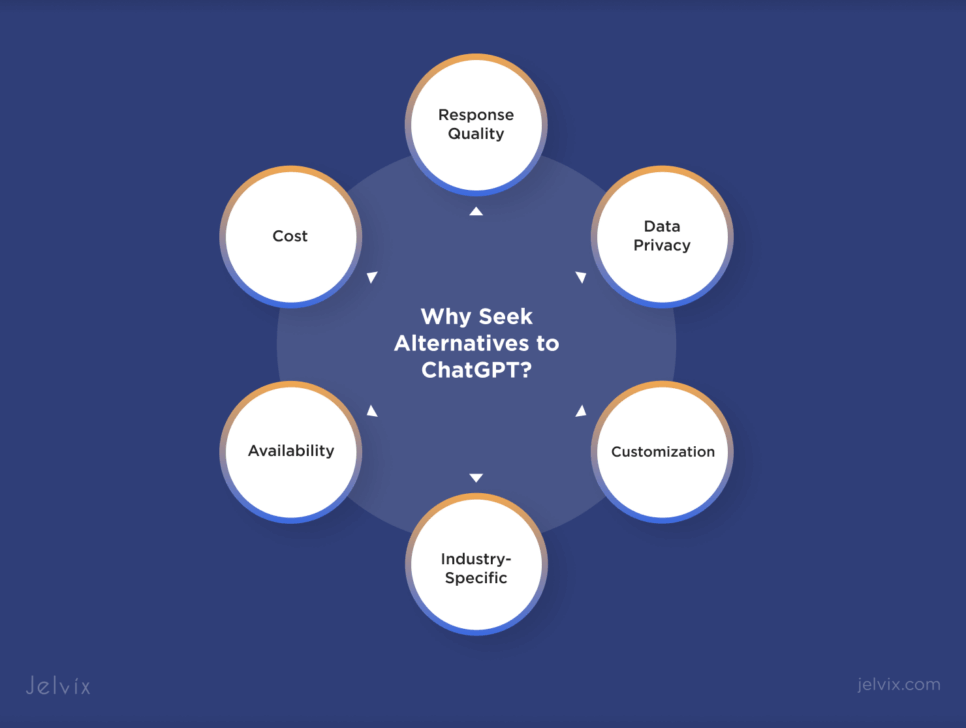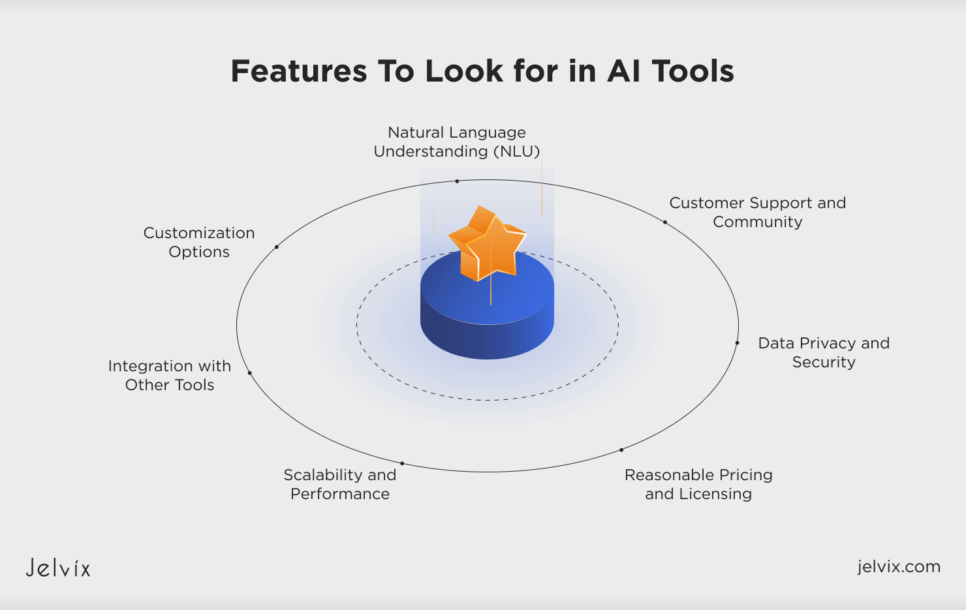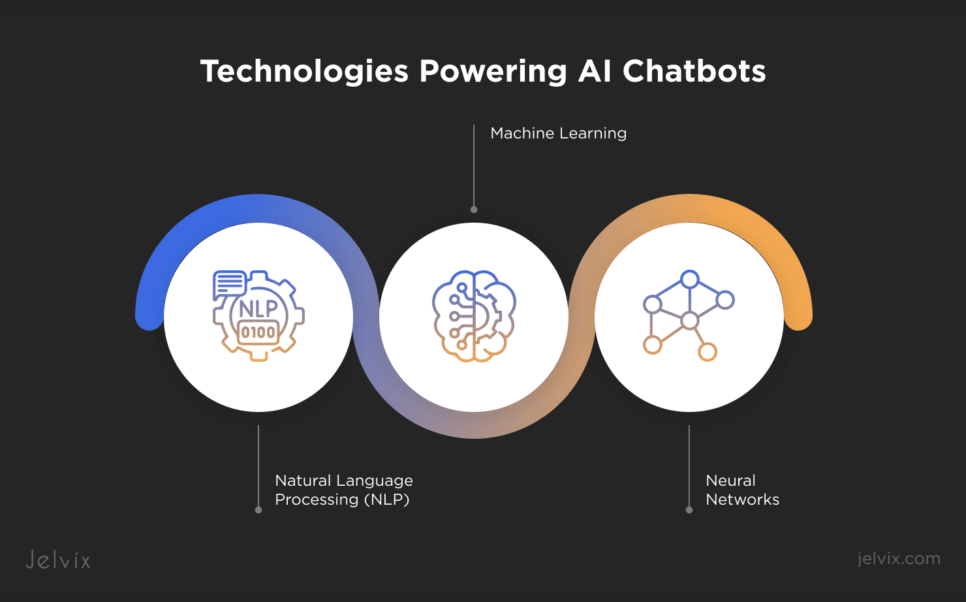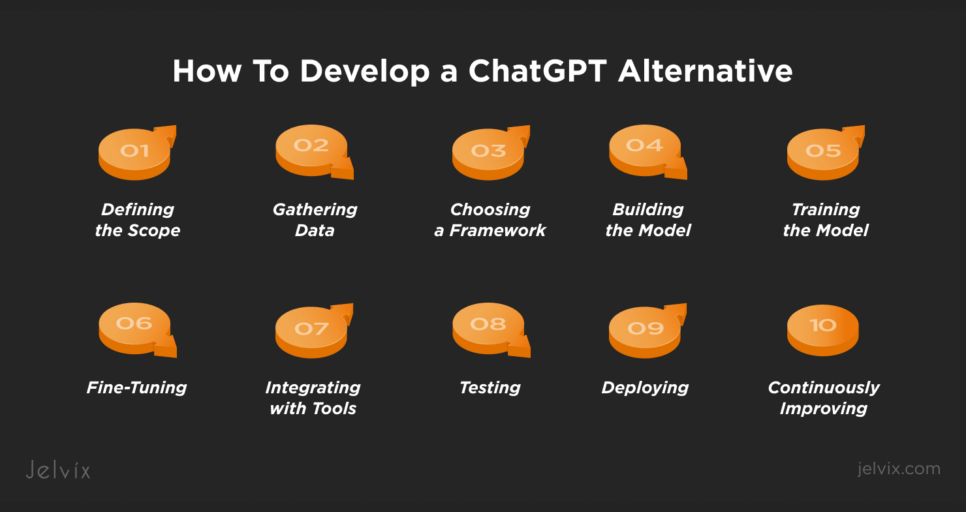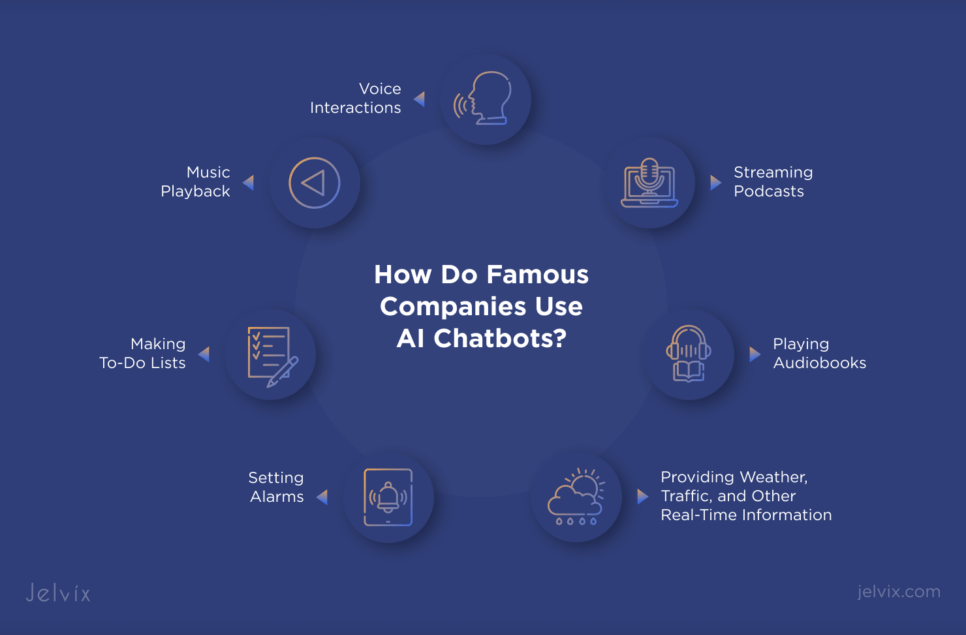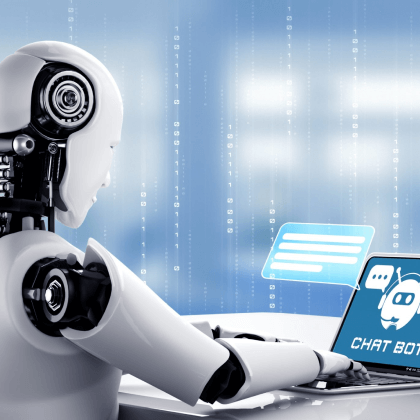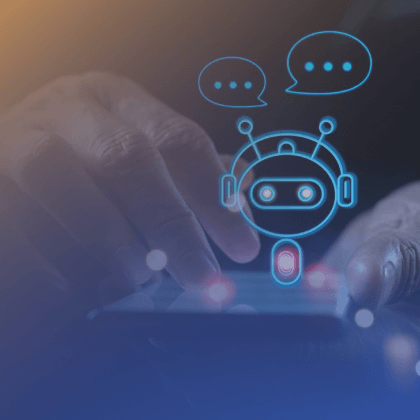ChatGPT has taken the world by storm, becoming a go-to tool for everything–from answering questions to generating creative content. Its impact has been huge, but it’s not the only player in the game. You’re in the right place if you’re looking for a ChatGPT alternative. This article will guide you through 20 top AI competitors that offer unique features and capabilities. Let’s dive in!
Why Seek Alternatives to ChatGPT?
ChatGPT is amazing, but it could be better to use some other options. Here are a few reasons why you might want to look for an alternative:
- Response Quality: ChatGPT’s answers can vary in accuracy and detail. Other tools often provide more precise and comprehensive responses.
- Cost: ChatGPT can be expensive. For those on a budget, many alternatives are more affordable.
- Availability: ChatGPT can get busy, leading to slower response times. Other AI tools are often more reliable during high-demand periods.
- Industry-Specific Needs: If you need something tailored to your specific industry, another AI chat tool might be better suited for your needs.
- Customization: While ChatGPT has customization limits, some alternatives offer more extensive options to tweak and adjust responses to fit your needs.
- Data Privacy: If data safety is a top priority, some alternatives provide stronger privacy features.
Exploring these options can help you find the best chat AI tool for your specific needs.
Features To Look for in AI Tools
When evaluating different artificial intelligence tools, companies must ensure that the AI chatbot alternatives meet their needs. Here are some key features to consider:
- Natural Language Understanding (NLU): Advanced NLU capabilities help the chatbot understand and generate human-like text, making interactions more natural and effective.
- Customization Options: Ability to tailor responses, set preferences, and adjust settings to fit specific business needs and workflows.
- Integration with Other Tools: Seamless integration with existing systems like CRM, email, and other software enhances current technological infrastructure.
- Scalability and Performance: High accuracy and quick response times ensure real-time engagement. The tool should also scale to handle various project sizes and complexities.
- Pricing and Licensing: Understand the cost structure and licensing agreements. Choose a model that fits your budget and offers the necessary features.
- Data Privacy and Security: Robust security measures to protect user data and compliance with global privacy standards safeguard information and build trust.
- Customer Support and Community: Reliable support through tutorials, FAQs, customer service, and an active user community for sharing insights and assistance.
Considering these features, you can find the best AI apps that meet your specific needs and help enhance your business operations.
What Are the Top 20 ChatGPT Alternatives?
Microsoft’s Turing Natural Language Generation (T-NLG)
T-NLG, developed by Microsoft Research, is a sophisticated language model designed for tasks like generating human-like text, summarizing information, and creating various text formats such as poems or code snippets.
Benefits:
- Enhanced Productivity: T-NLG aids in summarizing documents, suggesting writing styles, and providing detailed answers to queries.
- Improved User Experiences: It enhances interactions with chatbots and digital assistants, facilitating more natural and responsive conversations.
- Content Creation Assistance: Useful for generating ideas, drafting content, and personalizing marketing materials.
Disadvantages:
- Limited Access: Currently not publicly available; primarily used for research within Microsoft.
- Potential for Bias: Like many AI models, T-NLG may reflect biases in its training data, affecting the fairness and accuracy of its outputs.
- Safety Concerns: The powerful capabilities of T-NLG pose risks, including potential misuse for generating misleading or harmful content.
T-NLG, with 17 billion parameters, excels in factual summarization, comprehensive Q&A, and generating creative text like poems and code. However, it is not publicly accessible and is used mainly for research within Microsoft. On the other hand, ChatGPT, with 1.5 trillion parameters across various versions, is known for its conversational skills and versatility in text generation. It is available via a paid API and limited public access, making it widely used for engaging dialogues and diverse text creation. T-NLG focuses on structured information tasks, while ChatGPT shines in interactive and versatile text generation.
Gemini (Google Bard)
Google Gemini, developed by Google AI, is an advanced AI model designed for detailed conversations. It supports text, voice, and image inputs, utilizing Google’s extensive knowledge base and language understanding. Gemini engages in natural language conversations, responds comprehensively, and creates various text styles. It maintains context throughout interactions and integrates seamlessly with Google services, receiving regular updates for continuous improvement.
Benefits:
- Leverages Google’s Extensive Data Resources: Provides highly accurate and up-to-date information.
- Multi-Modal Input Support: Allows for versatile input methods.
- Seamless Integration with Google Services: Enhances usability within the Google ecosystem.
- Advanced Contextual Understanding: Maintains context for more coherent interactions.
- Continuous Improvements: Regular updates for improved performance and features.
Disadvantages:
- Privacy Concerns: Potential issues with data privacy.
- Limited Customization: Fewer options to tailor responses to specific needs.
- Heavily Reliant on Google’s Ecosystem: Best suited for users already using Google services.
Google Gemini and ChatGPT are powerful AI models, with unique strengths. Gemini excels in conversational tone, free web access, image generation, and faster response times, particularly in its free tier. ChatGPT, known for its informative responses, has recently added real-time web access, though this feature is limited in the free version.
Gemini allows users to edit responses and supports longer conversation threads, making it ideal for extended interactions. In contrast, ChatGPT has limitations regarding conversation length in both free and paid versions.
Overall, for free usage, Gemini offers a more powerful tier, while for paid usage, both Gemini Advanced and ChatGPT Plus are close competitors, with the choice depending on specific needs.
Jasper.ai
Jasper AI generates diverse content types like blog posts, social media updates, and emails from a simple brief. It allows you to adjust the tone to match your brand, professional or casual. With various templates, Jasper AI speeds up writing for specific content like product descriptions and ad copy. Its SEO integration suggests relevant keywords to improve your search rankings.
Benefits:
- Time-Saving: Jasper AI quickly creates content, becoming a perfect choice for busy marketers.
- Versatile: Generates various content types, from detailed blog posts to social media updates.
- User-Friendly: Intuitive interface, easy for beginners.
- SEO-Friendly: Built-in SEO tools enhance content visibility.
- Customizable Tone: Adjusts tone to match your brand voice for consistent communications.
Disadvantages:
- Cost: Can be expensive, especially for small businesses.
- Learning Curve: May take some time to learn how to fully utilize all features.
- Dependence on Input Quality: Content quality relies on the quality of the input brief.
- Occasional Errors: Sometimes produces content that needs significant editing.
Both Jasper AI and ChatGPT generate high-quality content quickly and allow you to customize the tone and style. They are user-friendly and support various content types. However, Jasper AI stands out among ChatGPT competitors with its robust SEO features and user-friendly templates, ideal for improving search engine rankings. ChatGPT is more cost-effective and accessible, with flexibility for creative and complex content, while Jasper AI excels in structured and templated content creation.
Writesonic
Writesonic is a versatile AI writing tool designed to help you create engaging content quickly. It’s perfect for writing blog posts, ads, product descriptions, and social media updates. Additionally, Writesonic includes a powerful AI that can adjust the tone and style of your content to match your brand voice, ensuring consistency across all your communications.
Benefits:
- Time-Saving: Quickly generates various types of content, saving you time.
- Versatile: Can create everything from blog posts to ads and social media updates.
- User-Friendly: Easy to use, even for beginners.
- Customizable Tone: Adjusts tone and style to match your brand voice.
- Templates: Offers templates for different content needs, making writing faster and easier.
Disadvantages:
- Cost: Can be pricey for small businesses or individuals.
- Quality Variance: Content quality can vary depending on the input provided.
- Learning Curve: May require some time to learn all features effectively.
- Occasional Edits: Sometimes produces content that needs further editing.
Writesonic and ChatGPT generate high-quality content quickly and let you customize the tone and style. Writesonic offers structured templates for specific content types, ideal for fast, templated writing. ChatGPT is more cost-effective and flexible, making it better for a wide range of creative and complex content. While Writesonic excels in quick, consistent content creation, shines in versatility and accessibility, making it a strong alternative to ChatGPT.
Copy.ai
Copy.ai is one of the alternatives to ChatGPT, a dynamic AI writing tool designed to help you create engaging content quickly. Chatbot offers numerous pre-built templates for various writing needs, such as website headlines, product descriptions, and social media posts. It provides creative writing ideas to inspire and kickstart your content creation. By generating content ideas swiftly, Copy.ai helps you overcome writer’s block and saves you time and effort.
Benefits:
- Professional Quality: Produces clear and compelling marketing messages.
- Overcomes Writer’s Block: Provides a steady stream of ideas to prevent staring at a blank page.
- Efficient: Saves time and effort by generating numerous content ideas quickly.
Disadvantages:
- Needs Editing: Suggestions might require refinement to fit specific needs.
- Limited Free Plan: The free plan has restrictions, with more features available in the paid plans.
- No Real-Time Interaction: Focuses solely on content generation, not on conversational engagement.
Copy.ai and ChatGPT are powerful AI tools, but they serve different purposes. ChatGPT is designed to engage in conversations and answer questions interactively. Copy.ai, however, is specifically tailored for creating marketing content, making it a valuable tool for content creation. Think of ChatGPT as a conversational assistant, while Copy.ai acts as a dedicated marketing content generator.
Rytr
Rytr offers a broad array of features to support various content creation needs. It holds several templates for different forms of writing, right from a blog post to video descriptions and product descriptions. Moreover, the style and tone of AI adjust according to your brand voice for your content. Besides, there’s an inbuilt plagiarism checker and keyword research tools at Rytr to maximize your content on search engines. Its user-friendly interface and quick content generation capabilities make it a valuable tool for content creators.
Benefits:
- Time-Saving: Quickly generates various types of content, saving you valuable time.
- Versatile: Can create a wide range of content, from blog posts to social media updates.
- User-Friendly: Easy to navigate and use, even for beginners.
- Customizable Tone: Adapt the tone and style to match your brand voice.
- Grammar and Plagiarism Check: Ensures your content is error-free and original.
Disadvantages:
- Cost: Some features are limited to the paid plans, which might be expensive for small businesses.
- Quality Variance: The quality of the output can vary based on the input provided.
- Learning Curve: May take some time to fully understand and utilize all the features.
- Occasional Edits: Sometimes requires additional editing to perfect the content.
Rytr offers structured templates for specific content types and includes a built-in plagiarism checker, making it ideal for error-free, templated writing. ChatGPT is more cost-effective and offers greater flexibility, making it suitable for a broader range of creative and complex content needs. While Rytr is excellent for producing consistent and accurate content, ChatGPT’s versatility and accessibility make it a strong competitor in the AI writing assistant space.
Sassbook AI Writer
Sassbook AI Writer simplifies content creation with an AI Text Generator that produces diverse styles based on user prompts. Users can control their creativity level, choosing between conservative, balanced, and inventive settings. Additionally, Sassbook offers tools for generating headlines, summarizing texts, and paraphrasing content to ensure originality and boost SEO rankings.
Benefits:
- Time-Saving: Generates various types of content quickly.
- Versatile: Supports multiple content styles like blog posts, social media updates, and stories.
- User-Friendly: Easy to navigate and use for all skill levels.
- Creativity Control: Allows adjustment of the text’s creativity level.
- SEO Optimization: Enhances content with SEO-friendly keywords and summaries.
Disadvantages:
- Limited Customization: Offers fewer customization options than some competitors.
- Dependency on AI Output: May need manual edits to ensure quality and relevance.
- Learning Curve: New users may need time to understand all features.
- Word Count Limitation: Free plans have strict word count limits per generation.
- Reliance on Internet Connection: Needs a stable internet connection to work effectively.
Sassbook AI Writer and ChatGPT are effective tools for quickly generating high-quality content with customizable tone and style. Sassbook excels with its structured tools for SEO optimization, summarization, and headline generation, making it ideal for marketing and storytelling. While Sassbook is strong in structured content creation, ChatGPT offers greater versatility and accessibility, making both robust competitors in the AI writing assistant space.
Chai
Chai is an AI-powered chatbot platform designed for engaging and entertaining text conversations. Utilizing advanced natural language processing, Chai generates realistic, human-like responses. Users can participate in interactive role-playing scenarios with AI chatbots. The platform’s deep learning technologies enable continuous improvement, allowing chatbots to evolve and adapt. Primarily designed for entertainment, Chai delivers captivating and fun interactions.
Benefits:
- Engaging Conversations: Provides stimulating and entertaining text interactions.
- Variety of Chatbots: Offers a wide selection of chatbots with different personalities.
- Creativity Boost: Helps spark new ideas and overcome creative blocks.
- User-Friendly: Easy to use, suitable for all ages and skill levels.
- Continuous Improvement: The chatbots learn and adapt over time, improving user experience.
Disadvantages:
- Limited Practical Applications: Primarily focused on entertainment, not ideal for business or customer service.
- Dependence on Internet Connection: Requires a stable internet connection to function effectively.
- Subscription Costs: Premium features require a subscription, which may be expensive for some users.
For those seeking ai like ChatGPT specifically for entertainment and creative interactions, Chai provides a unique and engaging experience. However, for more practical applications, ChatGPT’s versatility might be more beneficial.
Replika
Replika is an AI companion that provides emotional support and companionship through personalized conversations. It knows the context and emotions and even understands sarcasm with the advanced algorithms that make it respond like a human. The more a user interacts with Replika over time, the more it becomes aware of their needs and preferences. One can communicate through texts, voice, and video calls, which is pretty versatile.
Replika encrypts user data for privacy and security. Additionally, it offers activities like mindfulness exercises, journaling prompts, and goal-setting discussions to promote personal growth and well-being.
Benefits:
- Emotional Support: Provides a safe space for self-expression and emotional support.
- Companionship: Offers 24/7 availability for engaging conversations, helping reduce feelings of loneliness.
- Personal Growth: Facilitates self-improvement through activities and personalized feedback.
- User-Friendly: Easy to use, suitable for all ages.
- Safe Interactions: Prioritizes privacy and security, with measures to prevent inappropriate content.
Disadvantages:
- Subscription Cost: Premium features require a subscription.
- Not a Substitute for Professionals: Should not replace professional mental health services.
- Learning Curve: Users may need time to get accustomed to the AI’s conversational style.
- Limited Realism: AI may not always respond as nuanced as human interactions.
- Dependency Risk: Potential risk of becoming overly dependent on the AI for emotional support.
Replika excels in providing emotional support and personalized conversations, making it an excellent virtual companion. It includes such features as mood tracking, journaling, and mindfulness exercises to enhance personal growth and well-being. However, it may lack the versatility and broader application range of ChatGPT.
YouChat
YouChat is an AI assistant from You.com designed to boost productivity and creativity. It offers detailed answers, content creation, and seamless integration with digital platforms. This AI tool uses advanced natural language processing and machine learning for interactive user experiences.
YouChat provides personalized, conversational interactions using advanced algorithms to understand context and preferences. It integrates across websites, messaging apps, and social media. Chatbot offers modes like Balanced, Creative, and Precise for varied responses and includes tools like YouWrite for writing and YouImagine for visual content creation.
Benefits:
- Productivity: Automates tasks, saving time.
- Creativity: Suggests ideas for content creation.
- Communication: Streamlines workflows for clear communication.
- Decision-Making: Helps with data analysis and project management.
- Personalization: Adapts to user preferences.
Disadvantages:
- Development Phase: Some features may not be fully refined.
- Accuracy: Possible inaccuracies in responses.
- Functionality: Lacks some advanced features of other AI tools.
YouChat and ChatGPT are both powerful AI tools but serve different purposes. YouChat excels in real-time, conversational search, making it a great alternative to ChatGPT for quick, context-specific answers and integrated content creation. ChatGPT is more versatile and used for creative writing and complex tasks. YouChat focuses on productivity through task automation, while ChatGPT offers a broader range of AI-assisted applications.
Perplexity AI
Perplexity AI provides quick, accurate answers for research and writing. It offers a conversational interface that retrieves real-time information from various sources, making it an excellent resource for current data.
Benefits:
- Free to Use: Offers essential features at no cost.
- Precise Responses: Provides detailed and accurate answers.
- User-Friendly: Simple interface for easy navigation.
- Context Awareness: Understands the context of queries.
- Versatility: Useful for researchers, writers, and professionals.
Disadvantages:
- Development Phase: Some features are still in progress.
- Accuracy Concerns: Possible inaccuracies in responses.
- Limited Functionality: Lacks some advanced features of other AI tools.
Perplexity AI is great for tasks needing precise and detailed information, making it ideal for research. ChatGPT excels in engaging conversations and is versatile, and suitable for creative writing and customer support. Perplexity AI is a strong AI like ChatGPT for accurate, straightforward information, while ChatGPT is better for dynamic conversations.
DialoGPT
DialoGPT, developed by Microsoft, is an AI language model for generating conversational responses. Built on the GPT-2 framework, it has been fine-tuned using 147 million multi-turn dialogues from Reddit. This model is crafted to deliver human-like, engaging conversational responses, making it ideal for chatbots and other interactive applications. The model comes in different sizes (small, medium, large) to meet various needs and can be integrated into applications using Hugging Face’s libraries.
Benefits:
- Human-like Conversations: Produces natural dialogue.
- Large-Scale Pretraining: Trained on extensive dialogue data for better performance.
- Scalability: Available in multiple sizes for different requirements.
- Integration-Ready: Easy to integrate with existing applications.
Disadvantages:
- Resource Intensive: Needs significant computational power.
- Data Bias: May reflect biases from training data.
- Limited Creativity: Responses may lack human creativity.
- Context Limitation: Can struggle with long-term context in dialogues.
DialoGPT focuses on conversational responses, making it ideal for chatbots. It excels at creating natural dialogue but may have issues with long-term context. ChatGPT OpenAI App is more versatile and creative, suitable for content creation, tutoring, and customer support.
Cleverbot
Cleverbot is an AI chatbot that engages in natural language conversations by learning from past interactions. It uses machine learning to simulate human-like dialogue, drawing from over 150 million lines of conversation. Cleverbot is designed for casual conversations, language practice, and entertainment.
Benefits:
- User-Friendly: Has a simple interface and is easy to use.
- Engaging Conversations: Offers unique and thought-provoking dialogues.
- Educational Tool: Useful for language learning and understanding AI.
- Adaptive Learning: Continuously improves user interactions.
- Versatile Topics: Can discuss a wide array of subjects.
Disadvantages:
- Repetitive: Can become predictable over time.
- Inconsistent Responses: Sometimes produces nonsensical or offensive replies.
- Limited Depth: Struggles with complex, long-term conversations.
- Casual Use Only: Not suitable for professional advice.
Cleverbot is ideal for casual, fun interactions and is easy to use for quick chats and language practice. It maintains context in short exchanges but may falter with more complex dialogues.
Kuki
Kuki, formerly known as Mitsuku, is an AI chatbot designed for engaging conversations. Created with the Pandorabots framework, Kuki has won the Loebner Prize five times. It operates on multiple platforms like social media, websites, and messaging apps, making it accessible and versatile. Kuki also offers entertainment features like games, daily horoscopes, and interactive activities.
Benefits:
- User-Friendly: Easy to use across multiple platforms.
- Engaging: Provides entertaining conversations.
- Educational: Good for language learning and exploring AI.
- Versatile: Handles a wide range of topics and tasks.
- Award-Winning: Has won multiple Loebner Prizes for its conversational skills.
Disadvantages:
- Accuracy: May struggle with complex questions.
- Emotion Expression: Limited in expressing emotions and empathy.
- Inappropriate Content: Sometimes fails to handle inappropriate messages.
- Companionship: May not meet expectations for companionship.
- Cultural Sensitivity: Can have difficulty with different cultural contexts.
Kuki is ideal for casual use and educational purposes with features like games and horoscopes. However, it may not be as accurate with complex queries or emotional interactions.
Inferkit
Inferkit is an AI text generator that creates high-quality, human-like text on various topics. It is ideal for blog posts, articles, product descriptions, and more. Its advanced features, multilingual support, interactive prompts, and continuous learning capabilities make it a versatile tool.
Benefits:
- Advanced Text Generation: Produces coherent and engaging content.
- Customizable: Various settings tailor text generation.
- Multilingual Support: Generates text in multiple languages.
- User-Friendly: Simple interface with easy-to-use settings.
- Continuous Learning: Improves with user feedback.
Disadvantages:
- Free Version Limits: Limited to 10,000 characters per week.
- Randomness: Content can be random, requiring multiple tries.
- Not Ideal for Factual Content: Best for creative writing, not research-based information.
Inferkit is excellent for storytelling and creative writing, with customizable settings and interactive prompts. It excels in generating narrative content but may not be ideal for factual information.
AI Dungeon
AI Dungeon uses AI to create interactive stories that adapt to user inputs. It offers various genres like fantasy, mystery, and apocalyptic themes. The platform supports multiplayer storytelling and has an easy-to-use interface. Players type commands to interact, and the AI generates responses to continue the story.
Benefits:
- Interactive: Stories change based on your choices.
- Creative: Explore many possible adventures.
- Accessible: Available on multiple platforms.
- Community: Share and discuss stories with others.
Disadvantages:
- Subscription: Advanced features need payment.
- Inconsistent: AI responses can be random or nonsensical.
- Learning Curve: Takes time to learn commands and features.
AI Dungeon and ChatGPT both offer interactive text experiences. AI Dungeon is great for immersive, story-driven adventures, letting you explore different genres and influence the plot. However, it can be inconsistent. AI Dungeon is perfect for storytelling, while ChatGPT is useful for broader applications.
Murf.ai
Murf.ai is an AI-powered voice generator that converts text into lifelike speech. It is used for content creation, e-learning, marketing, and more. Murf.ai offers over 120 voices in more than 20 languages, making it versatile for various voiceover needs. The platform integrates with tools like Google Slides and Canva, enhancing its usability for multimedia content creation.
Benefits:
- High-Quality Voiceovers: Produces realistic and professional voiceovers.
- Customizable: Adjusts voice pitch, tone, and speed.
- Multilingual: Supports multiple languages.
- Easy to Use: User-friendly interface.
- Voice Cloning: Creates personalized voice replicas.
Disadvantages:
- Cost: Can be expensive for high-volume use.
- Misuse Risk: Potential for misuse in creating fake audios.
- Limited Emotion: Less expressive than human voices.
- Subscription Limits: The free plan has limited features and usage time.
Murf.ai specializes in high-quality voiceovers with customizable features, ideal for multimedia content. It excels in text-to-speech conversion and supports multiple languages, useful for global content creation. While Murf.ai focuses on voice quality and audio features, ChatGPT provides broader text-based interactions and content generation.
Designs.ai
Designs.ai is an AI-powered creative platform for making logos, videos, banners, and more. It is designed to make professional design accessible and easy for everyone, including businesses, marketers, and educators.
Benefits:
- Ease of Use: Simple interface for all skill levels.
- High-Quality Output: Professional-grade designs and voiceovers.
- Multilingual Support: Content generation in multiple languages.
- Affordable: Reasonable pricing plans.
- Collaboration: Team collaboration and feedback features.
- Integration: Works with tools like Canva, Adobe Photoshop, and WordPress.
- Speechmaker: Converts text into voiceovers in over 40 languages.
Disadvantages:
- Cost: Paid plans can be pricey for heavy users.
- Learning Curve: Some features may take time to learn.
- Customization: Limited advanced options for professional designers.
Designs.ai focuses on creative work like graphic design and video creation, offering quick, high-quality outputs.
Soundraw
Soundraw is an AI-powered music generator that allows users to create unique, royalty-free music tailored to their needs. By choosing the mood, genre, and length, Soundraw generates customizable tracks perfect for various projects, including videos, podcasts, and games.
Benefits:
- Unlimited Music Creation: Generate as many tracks as you need.
- Easy Customization: Adjust various elements to fit your project.
- Royalty-Free: No copyright concerns.
- Versatile Use: Suitable for videos, podcasts, games, and more.
- Flexible Pricing: Plans to fit different budgets.
- Permanent Licenses: Keep and use downloaded tracks forever.
Disadvantages:
- Single Device Use: One account per device at a time.
- Daily Download Limit: Personal plan limits to 50 downloads per day.
- Limited Length: Maximum song length is 5 minutes.
Soundraw and ChatGPT serve different purposes. Soundraw specializes in generating high-quality, customizable music, making it ideal for creators needing background tracks for various projects. It excels in producing unique, royalty-free music tailored to specific needs.
ChatSonic
ChatSonic is an advanced AI chatbot developed by Writesonic. It uses the latest GPT-4 model to generate text, and images, and even respond to voice commands. ChatSonic is designed to help with content creation, digital marketing, customer service, and more, making it a versatile tool for various tasks.
Benefits:
- Quick Results: Provides fast and accurate content generation.
- User-Friendly: Easy to use without needing technical knowledge.
- High-Quality Content: Produces detailed and accurate text.
- Cost-Effective: Affordable pricing plans.
- Automation: Streamlines content creation tasks.
Disadvantages:
- Subscription Costs: Advanced features are limited to paid plans.
- Inconsistencies: Image generation can be inconsistent.
- Fact-Checking Needed: Some responses may require verification for accuracy.
ChatSonic excels in generating both text and images, providing real-time information with the help of Google search integration. It is user-friendly and offers voice command capabilities, making it a flexible tool for content creators and marketers.
How To Develop a ChatGPT Alternative
Developing a ChatGPT alternative involves several steps and considerations. Here’s a simplified guide to get you started.
- Natural Language Processing (NLP): This is essential for understanding and generating human-like text. NLP helps the AI understand context, sentiment, and the nuances of language.
- Machine Learning: Algorithms that allow the AI to learn from data and improve over time. This includes supervised learning (training with labeled data) and unsupervised learning (finding patterns in data without labels).
- Neural Networks: Deep learning models, especially transformers, are crucial. They can process vast amounts of text data to generate coherent and contextually relevant responses.
To develop something similar to Chat GPT App, you have to follow the following steps:
- Define the Scope: Decide what your chatbot will do. Will it focus on customer service, casual conversation, or a specific industry?
- Gather Data: Collect large datasets of text conversations. This data will be used to train your model.
- Choose a Framework: Select a machine learning framework like TensorFlow or PyTorch. These frameworks provide tools for building and training neural networks.
- Build the Model: Develop a neural network model, such as a transformer model. The architecture will be similar to GPT (Generative Pre-trained Transformer).
- Train the Model: Use your dataset to train the model. This involves feeding the model text data and adjusting it to minimize errors.
- Fine-Tuning: Fine-tune the model on specific tasks or smaller datasets to improve performance in particular areas.
- Integrate with Tools: Connect your AI chatbot with other tools and platforms, such as CRM systems, messaging apps, or your website.
- Testing: Test the chatbot extensively to ensure it provides accurate and relevant responses.
- Deployment: Deploy the chatbot on your desired platform. Ensure you have an infrastructure for handling user interactions and maintaining the system.
- Continuous Improvement: Regularly update the model with new data and feedback to improve performance.
To ensure your AI chatbot is safe and effective, be aware of these common challenges:
- Data Quality: Ensure you have high-quality, diverse data to train the model effectively.
- Bias and Ethics: Address potential biases in the training data to avoid biased responses.
- Scalability: Design the system to handle large volumes of interactions smoothly.
- Privacy and Security: Implement robust security measures to protect user data.
- User Experience: Focus on creating a user-friendly interface and experience.
- Cost: Consider the computational resources required for training and deploying large AI models, which can be expensive.
Developing an AI chatbot like a chat GPT app involves complex technology and thoughtful planning. Stay updated with the latest ai news to keep improving your model and stay ahead of the competition.
Discover how we developed a custom AI chatbot to streamline clinical operations while ensuring patient data security.
How Do Famous Companies Use AI Chatbots?
AI chatbots have become essential tools for many of the world’s leading companies, transforming the way they interact with customers and manage tasks. These AI-powered assistants provide personalized experiences, streamline operations, and enhance user engagement. Here are five notable examples of how famous companies utilize AI chatbots to improve their services.
Amazon uses Alexa, an AI-powered virtual assistant, to provide the following services:
- voice interactions;
- music playback;
- making to-do lists;
- setting alarms;
- streaming podcasts;
- playing audiobooks;
- providing weather, traffic, and other real-time information.
Alexa also integrates with smart home devices, allowing users to control household items like lights and thermostats with voice commands.
Apple’s Siri is an AI-powered virtual assistant that helps users perform tasks on their devices. Siri uses voice recognition to send messages, make calls, set reminders, answer questions, and provide suggestions. It also integrates with various apps, allowing users to perform functions like ordering food or booking rides.
Google Assistant is an AI chatbot that provides personalized assistance by leveraging Google’s vast data resources. It can perform different tasks: managing schedules, sending texts, setting reminders, and controlling smart home devices. Google Assistant also offers real-time translation, playing music, and answering questions by pulling information from Google Search.
Microsoft‘s Cortana is an AI assistant designed to help with productivity tasks. It integrates with Microsoft 365 to assist with managing calendars, setting reminders, sending emails, and providing notifications. Cortana can also control smart home devices and perform searches on the web.
Spotify uses an AI chatbot for personalized music recommendations and customer support. The AI analyzes user preferences and listening habits to create customized playlists and suggest new music. For customer support, Spotify’s chatbot helps users troubleshoot issues, manage accounts, and find information about subscriptions and features.
Conclusion
AI chatbots enhance customer service, streamline tasks, and provide personalized experiences. Key features to consider include natural language understanding, customization options, and integration with existing tools. Common challenges include data privacy, scalability, and ensuring unbiased responses.
When choosing an AI tool, consider your specific needs, the quality of support, and the overall cost to find the best fit for your application. For expert consultation and tailored solutions, contact Jelvix to guide you through the process and optimize your AI chatbot implementation.
FAQ
What are AI chatbots?
AI chatbots are artificial intelligence-powered programs designed to simulate human conversation. They use natural language processing (NLP) and machine learning to understand and respond to user inputs in a conversational manner. AI chatbots can be used for various purposes, including customer support, personal assistance, and content creation.
Who are ChatGPT competitors?
Competitors to ChatGPT include AI language models and chatbot solutions from various companies. Notable competitors are:
– Google Bard for its conversational capabilities.
– Microsoft’s Turing Natural Language Generation (T-NLG) for advanced text generation.
– Jasper.ai and Writesonic for content creation.
– Replika for personalized interactions and mental health support.
Which competitors for ChatGPT were launched by Google?
Google has developed several competitors to ChatGPT, most notably: Google Bard: A conversational AI designed to provide interactive and informative dialogues. Google’s LaMDA (Language Model for Dialogue Applications): Another powerful conversational AI that can engage in open-ended conversations and answer complex questions.
Are there any free alternatives to ChatGPT?
Yes, several free alternatives to ChatGPT are available. For example:
– YouChat offers a free version with basic features.
– Chai provides free access with certain limitations.
Many other AI tools offer free trials or freemium models, allowing users to test their features before committing to a paid plan.
How long does it take to implement an AI tool into my workflow?
Implementation time varies depending on the tool and your specific requirements. Some tools offer easy integration and can be set up in a matter of hours, while others might require more extensive customization and integration efforts, taking several days or weeks.
Need a high-quality professional?
Fill the expertise gap in your software development and get full control over the process.


